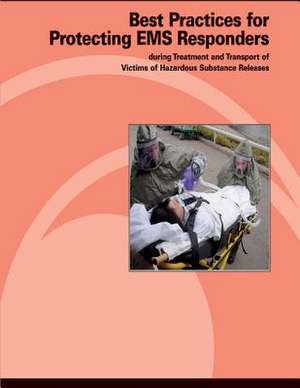Best Practices for Protecting EMS Responders During Treatment and Transport of Victims of Hazardous Substance Release
Autor U. S. Department of Labor, Occupational Safety and Administrationen Limba Engleză Paperback
Preț: 118.21 lei
Nou
Puncte Express: 177
Preț estimativ în valută:
22.62€ • 23.73$ • 18.83£
22.62€ • 23.73$ • 18.83£
Carte disponibilă
Livrare economică 11-25 martie
Preluare comenzi: 021 569.72.76
Specificații
ISBN-13: 9781478145165
ISBN-10: 1478145161
Pagini: 100
Dimensiuni: 216 x 279 x 5 mm
Greutate: 0.25 kg
Editura: CREATESPACE
ISBN-10: 1478145161
Pagini: 100
Dimensiuni: 216 x 279 x 5 mm
Greutate: 0.25 kg
Editura: CREATESPACE
